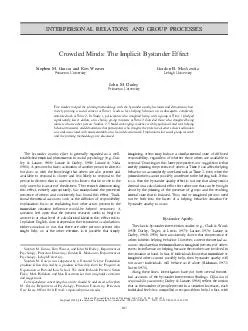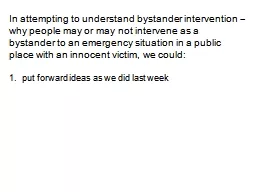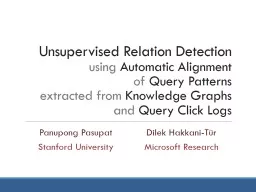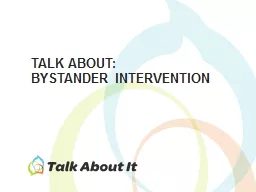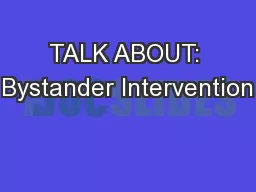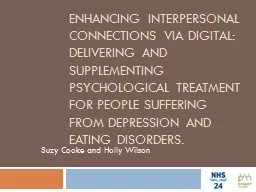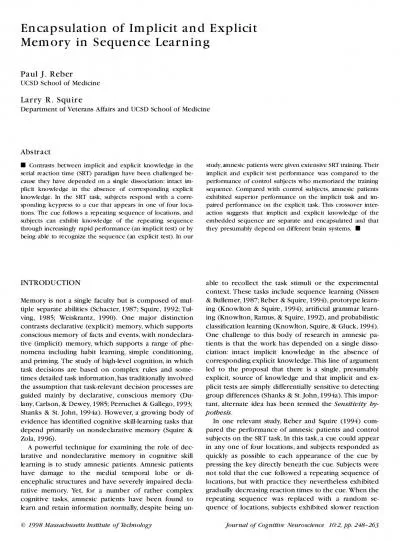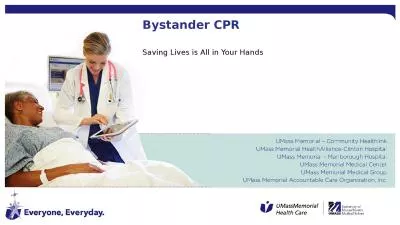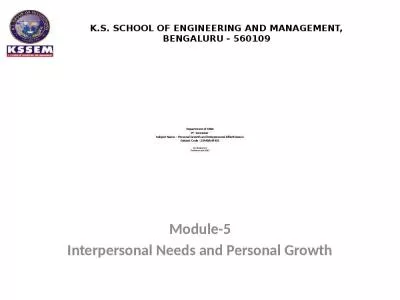PDF-INTERPERSONAL RELATIONS AND GROUP PROCESSES Crowded Minds The Implicit Bystander Effect
Author : faustina-dinatale | Published Date : 2014-11-08
Garcia and Kim Weaver Princeton University Gordon B Moskowitz Lehigh University John M Darley Princeton University Five studies merged the priming methodology with
Presentation Embed Code
Download Presentation
Download Presentation The PPT/PDF document "INTERPERSONAL RELATIONS AND GROUP PROCES..." is the property of its rightful owner. Permission is granted to download and print the materials on this website for personal, non-commercial use only, and to display it on your personal computer provided you do not modify the materials and that you retain all copyright notices contained in the materials. By downloading content from our website, you accept the terms of this agreement.
INTERPERSONAL RELATIONS AND GROUP PROCESSES Crowded Minds The Implicit Bystander Effect: Transcript
Download Rules Of Document
"INTERPERSONAL RELATIONS AND GROUP PROCESSES Crowded Minds The Implicit Bystander Effect"The content belongs to its owner. You may download and print it for personal use, without modification, and keep all copyright notices. By downloading, you agree to these terms.
Related Documents

